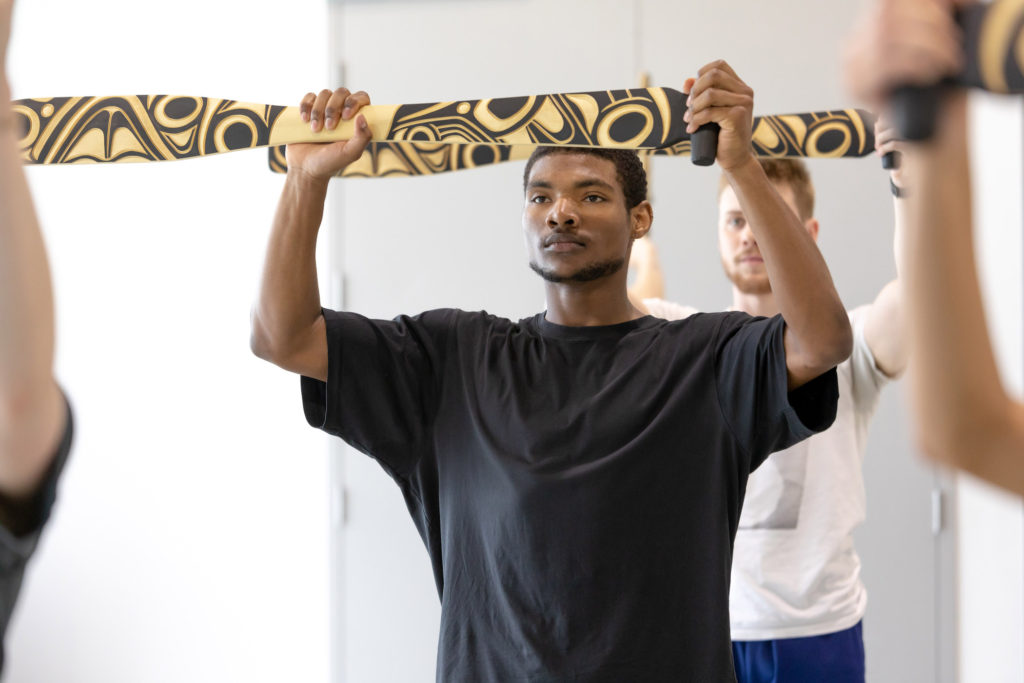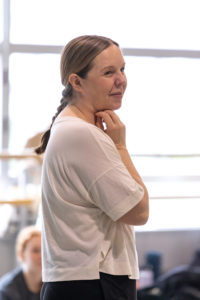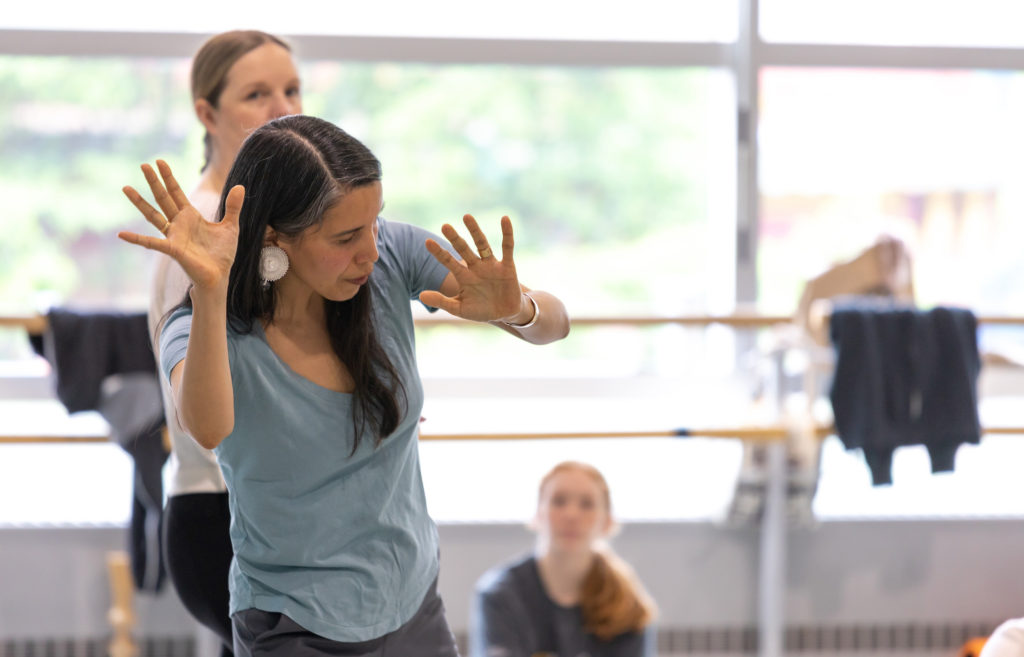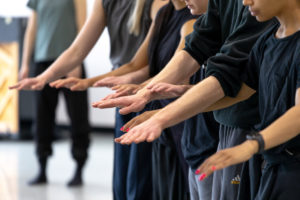Trailblazing Indigenous Perspectives: Margaret Grenier and Starr Muranko at Ballet BC - Vancouver Ballet Society
- Home
- Features 2020 - 2023
- Trailblazing Indigenous Perspectives: Margaret Grenier and Starr Muranko at Ballet BC

By Jenn Edwards
Two pillars of Vancouver’s Indigenous dance community, Margaret Grenier and Starr Muranko, are Ballet BC’s 2022-2023 artists in residence. Working in tandem, they are meeting with company dancers once a month to explore intersections between contemporary ballet and the Indigenous forms they practice as artistic directors of Dancers of Damelahamid and Raven Spirit Dance, respectively.
The collaboration is several years in the making. The conversation first began between the choreographers and former Ballet BC artistic director Emily Molnar, but was interrupted by a change in artistic directorship, as well as a pandemic, in 2020. Current director Medhi Walerski made the idea a reality, initially bringing the two women in to lead one-week choreographic labs in 2021 and 2022. Soon after arriving in Canada to lead Ballet BC, he had come to realize how essential such initiatives are to the country’s efforts at reconciliation. “The dancers come from various parts of the world, and it’s important for them to understand the history and meaning of this land,” French-born Walerski says.

Grenier and Muranko have a long history of working together, spanning almost 20 years, and yet the paths to their current dance practices look quite different. Grenier cannot remember a time in her life when she was not immersed in dance. Her parents, Ken and Margaret Harris, founded Dancers of Damelahamid on the Northwest coast of British Columbia, traditional territories of the Gitksan nation, in the 1960s. Its inception was part of a cultural revitalization movement following the lifting of the potlatch ban, under which the Canadian government forbade traditional feasts, ceremonies, and dances from 1885 to 1951. “I don’t remember learning [to dance], I just remember being part of the company, being present onstage with the other dancers — not having a very formal place, but just being there,” says Grenier. It wasn’t until she got older that she realized just how much this immersion in masked dance culture had shaped her identity as an Indigenous person. Grenier took the helm of the company in 2003, and is still performing.

Muranko found Indigenous dance later in life, in tandem with a contemporary dance education at Simon Fraser University in the early 2000s. She grew up taking ballet, tap, and jazz, while also having a strong connection to her grandmother, who was from the Moose Cree First Nation in Northern Ontario. After arriving at SFU, she found it comforting to spend time in the Indigenous Student Centre on campus, where she met “Grandma Harris,” Margaret’s mother. She was soon invited to meet the Harris family, and to dance with the company. Not long after, Michelle Olson hired her as a dancer at Raven Spirit, of which she is now co-artistic director with Olson.
Grenier and Muranko’s choreographic work at Ballet BC is in its early stages. While sections of movement are starting to crystallize, and preliminary music sketches are being composed by Chilean Edgardo Moreno, there is no concrete plan to put anything onstage yet. This slow, organic approach is integral to the Indigenous values the two choreographers are bringing to the ballet company.
During an interview, Muranko shared a Cree word she’s found inspirational in recent years, both in and out of the studio. “Pêyâhtak” means “to go slowly and with care, to take it easy.” It feels relevant to share it in the context of her and Grenier’s work with Ballet BC, as their approach is refreshingly gentle. There is no deadline; the goal is to take their time, and allow for the settling of new information and movement vocabulary in the dancers’ bodies before a performance is scheduled. Their first day in the studio, for instance, was mostly about listening. They brought in a Squamish elder, Bob Baker, to speak about the history of the territories on which the Dance Centre, where rehearsals took place, is situated.

They’ve also been taking ample time to talk among themselves and let the very international company of dancers share their own histories and memories. These conversations then work their way into the movement itself, which is connected to land, to nature, and to memory, both personal and ancestral. The goal is not to teach ballet dancers to imitate Indigenous dancers and move exactly like them. It’s more of a lens, a way of approaching improvisation and ensemble composition, moving toward a new, distinct movement language that isn’t strictly ballet, or contemporary, or Indigenous dance. As Grenier says, “Until now there hasn’t been a substantial conversation between ballet and Indigenous dance practices. It’s a very young conversation and there’s no template to follow.”
Muranko adds, “This is what real truth and reconciliation can look like. You have to give time to each other and you have to give space, and you have to let those relationships form.”

